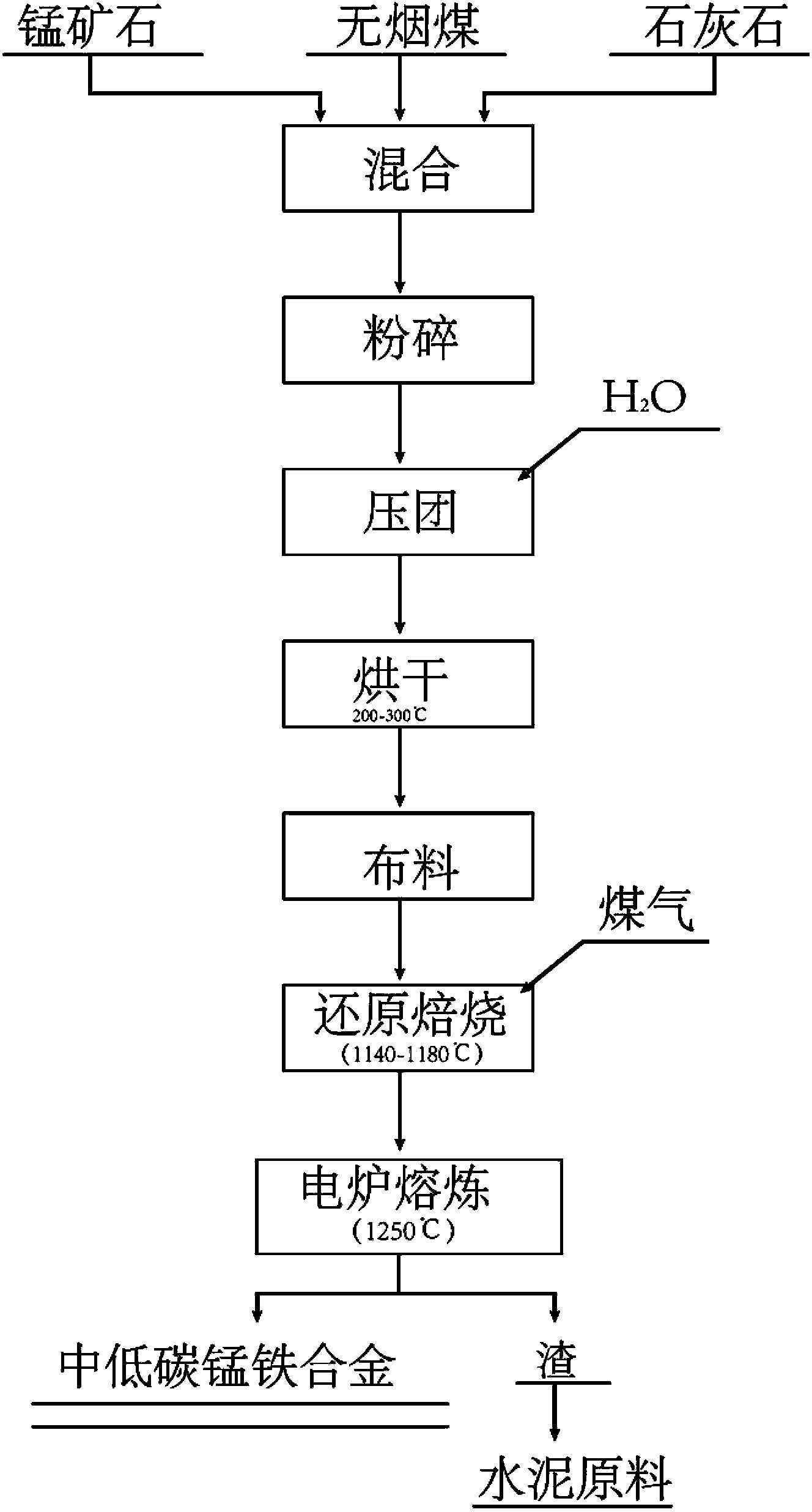Direct reduction method for producing medium-and-low-carbon manganese-iron alloy
A technology of low-carbon ferromanganese and reduction method, applied in the field of direct reduction method, can solve the problems of damage to the environment, high production cost, serious pollution, etc., and achieve the effects of meeting environmental protection requirements and short production process
- Summary
- Abstract
- Description
- Claims
- Application Information
AI Technical Summary
Problems solved by technology
Method used
Image
Examples
example 1
[0029] (1) Raw material composition
[0030]
[0031] (2) Ingredients:
[0032] The weight of anthracite required to reduce the Mn in 100kg manganese ore is 17kg (the utilization rate of anthracite is 90%);
[0033] The weight of anthracite required to reduce Fe in 100kg manganese ore is 3kg (the utilization rate of anthracite is 90%);
[0034] Therefore, the total weight of anthracite required to reduce Mn and Fe in 100kg manganese ore is 20kg.
[0035] SiO in 100kg manganese ore 2 The weight of limestone required for slag making is 23kg (select the slag alkalinity to be 1.4). The amount of the above-mentioned anthracite and limestone is calculated according to the raw material composition and equations (4), (7), (8), and (9) and configured in excess.
[0036] (3) Steps:
[0037] A. 100kg of manganese ore, 20kg of anthracite, and 23kg of limestone of the above-mentioned components are dropped into a pulverizer and pulverized to 120 orders to obtain a mixture;
[0038...
example 2
[0042] Manganese ore, anthracite, and limestone were mixed and crushed to 100 mesh, and the agglomerates were dried at 300°C. The roasting temperature in the tunnel-type reduction furnace was 1180°C, and the roasting time was 180 minutes. The rest were the same as in Example 1.
example 3
[0044] Manganese ore, anthracite, and limestone were mixed and crushed to 110 meshes, and the agglomerates were dried at 250°C. The roasting temperature in the tunnel-type reduction furnace was 1160°C, and the roasting time was 160 minutes. The rest were the same as in Example 1.
[0045] Manganese ore, anthracite, and limestone were purchased from local villages and used after testing.
PUM
 Login to View More
Login to View More Abstract
Description
Claims
Application Information
 Login to View More
Login to View More - R&D
- Intellectual Property
- Life Sciences
- Materials
- Tech Scout
- Unparalleled Data Quality
- Higher Quality Content
- 60% Fewer Hallucinations
Browse by: Latest US Patents, China's latest patents, Technical Efficacy Thesaurus, Application Domain, Technology Topic, Popular Technical Reports.
© 2025 PatSnap. All rights reserved.Legal|Privacy policy|Modern Slavery Act Transparency Statement|Sitemap|About US| Contact US: help@patsnap.com


